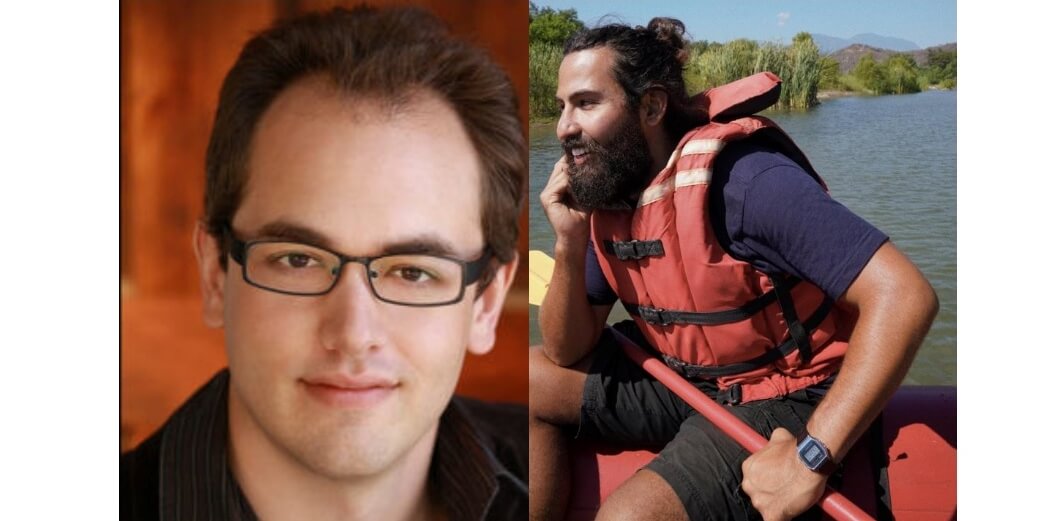Are you wondering what is the best way for adults to learn Spanish? Well, you’re in luck! We bring you expert advice along with the 18 most effective tips!
Learning Spanish as an adult
It’s never too late to learn a new language. Period. Regardless of whatever common myths you hear about language learning and age, adults are just as capable as children to learn a foreign language. If anything, adults have more learning experience and resources to pick up a second or third language.
In this article, we’ll show what the best way to learn Spanish as an adult is through different tools, methods, and techniques. Additionally, we’ll talk about the joys and perks of learning Spanish as adults.
Before we jump in, remember that you can cover all of your Spanish needs by downloading the Fluent Forever app and fast-tracking your journey to fluency with our Live Coaching program. You can also find out the best strategies with our comprehensive How To Learn Spanish Fast guide.
5 Reasons to learn Spanish as an adult
If you’re looking for the best way to learn Spanish as an adult, chances are you’re aware of all the amazing perks that come with it. However, in case you need more reasons to start learning the language of telenovelas, tapas, and salsa music, here’s a brief rundown.
Travel farther and wider
Spanish is objectively a global language, with 400 million people speaking it worldwide. Therefore, learning Spanish will open the door to communicating with people all around the world. Furthermore, it will make traveling to Spanish-speaking countries much less daunting and more enjoyable.
So, should you learn Spanish before traveling to Mexico or another country where Spanish is spoken? Sí!
For work, studies…
Sometimes, the best way to learn Spanish as an adult is to motivate yourself by thinking of all the benefits it can have on your career. Did you know that bilinguals are more likely to get hired in jobs for their ability to communicate in a second language? What’s more, learning a new language can increase your income and broaden your professional growth opportunities.
Are you still in school? Well, Spanish also creates opportunities for studying abroad on exciting academic programs. Be it a PhD in Barcelona or an exchange year in Mexico City, learning Spanish makes both more attainable.
… or for pleasure!
Of course, learning Spanish equates to more than money or study opportunities. Some people learn Spanish for the sheer joy and pleasure of knowing and communicating in a language. Consider that during the process you’ll learn about the different countries that speak it, the cultures surrounding it, and all of the rich music, traditions, films, and literature in Spanish.
Romance ♡
Ah, love! For all of you romantics who have fallen for a native Spanish speaker, think of all the points you’ll earn by learning to speak in their tongue! Additionally, what better way to win over your suegra (mother-in-law) than by chatting away to her in her own language?
Hint: Are you a romantic language learner? Check out these 10 ways to say I love you in different languages!
Self-improvement
Alright, so maybe all that mushy romance is not your thing. How about self-improvement? Learning Spanish coms with many overall benefits for yourself.
First off, learning a new language can boost your memory and other cognitive functions. Second, multilinguals tend to be better at multitasking and remembering sequences and lists. Third, learning a new language and the cultures around it can make you more tolerant and understanding of other people around you.
Why learning Spanish as an adult is great!
If you’ve researched the best way to learn Spanish as an adult, you’ll inevitably have come across the axiom that children are inherently superior at language learning. Now, while kids do have advantages when learning a second language – all the time in the world and zero apprehension of making mistakes – adults possess some nifty capabilities, too.

Photo by Anastasia Shuraeva from Pexels
So, before you start daydreaming of building a time machine to teach your younger self Spanish, here are some advantages of language learning in adulthood. (Ha! Take that, toddlers!)
Control how you learn Spanish
In language classes in school, you’re stuck with one syllabus, a specific methodology, and very often, the same teacher. As an adult, you’re free to pick the tools, resources, and methods to learn Spanish.
If you’d rather learn Spanish with podcasts instead of obscure, century-old grammar books, there’s no one stopping you! Additionally, you get to choose who guides your Spanish journey, as you won’t be stuck with a single tutor, teacher, or coach. By now, you’ll also know your learning style and are able to discern when a learning method or system is simply not for you.
In sum, unlike children, adults are free to choose how, when, and where they learn a language. So that’s Adults 1 – Children 0.
Captain of your language journey
Children usually learn with a predetermined goal in mind: passing a test, completing a course, or pleasing their parents. In contrast, adults choose why they learn a language, which makes the journey more personal.
Do you want to learn Spanish for work? Are you getting ready to move to another country? Whatever the reason, you are the captain of your language journey, so you get to choose the subjects you want to learn about. Adults 2 – Children 0.
More money to invest!
Whoever said money doesn’t buy happiness hasn’t yet discovered the gamut of language learning goodies available out there. Adults have more funds at their disposal to teach themselves Spanish, whereas children usually have a dollar and loose candy in their pocket at most. You get the point.
As an adult, you’re able to enroll in a full immersion language course, take a language holiday, or hire a private language coach. Additionally, in this day and age of technology, apps, online courses, and software for Spanish learning abound, leaving you truly spoiled for choice. For instance, there’s this app everyone keeps talking about that will help you become Fluent Forever in Spanish.
Final score: Adults 3 – Children 0.
How long does it take to learn Spanish for an adult?
When it comes to the best way to learn Spanish as an adult, you need to keep in mind two virtues: consistency and patience. We’re not gonna lie: like all things worth learning, Spanish takes time and dedication. But just how quickly can an adult learn Spanish?
Starting with the obvious, there is no concrete length of time to reach fluency in Spanish. Essentially, the more hours you put into learning, the faster you’ll see results. Regardless, any amount of time you’re able to invest will help you progress towards your language goals. Everyone has busy lives, and even 30 minutes a day during your lunch break goes a long way.
That being said, try not to obsess over how quickly you learn Spanish. Rather, focus on developing sustainable learning habits that will help you reach fluency efficiently in the long run.
Remember, slow and steady wins the race – and the sooner you start running, the better!
The 18 best ways to learn Spanish as an adult
It’s time to show you the best ways to learn Spanish as an adult by sharing the 18 most effective tips out there. To really get the most out of them and help boost your Spanish journey, we recommend that you download the Fluent Forever app and sign up for our Live Coaching.
Focus on the basics of Spanish
Like all languages, Spanish is made up of several essential building blocks: pronunciation, vocabulary, and grammar, for example. Mastering these fundamentals will make acquiring the rest of the language easier.
“But I’m not a beginner Spanish learner – I already know the basics.”
We hear you! If you’re at intermediate or advanced levels, this might seem inconsequential. However, regardless of your level, it’s good to keep these core elements in mind. So, before moving on to other methods, let’s go back to basics!
1. Learn how Spanish sounds
If you don’t know how a language sounds, how do you expect to speak it? To speak Spanish, you need to hear Spanish first. Being able to recognize and identify the sounds of a language makes learning it easier, and you’ll master it quicker.
On the other hand, if you don’t practice listening to the sounds of Spanish, the language will sound foreign to your ears. Understanding native speakers can be unnecessarily complicated. Speaking in Spanish, as well as discovering and retaining new vocabulary, tends to get harder.
For starters, you check out Fluent Forever’s Spanish Pronunciation Trainer, which is a great tool for learners at all levels, but especially for people starting from scratch. Alternatively, you can check out other free and accessible options listed in our How To Learn Spanish Fast guide.
2. Pick up the right vocabulary
It’s best if you spend your time picking up the vocabulary you’ll actually use. Spanish aficionados often try to learn every word they come across. Instead, they should learn words that will actually appear in their writing and conversations.
For instance, it’s more useful to learn the Spanish equivalent of “cat,” “man,” and “bus” than “platypus,” “apricot,” and “unicycle.” The former group will help you speak and understand Spanish faster, given that it’s made up of frequently used words.
Using these so-called frequency lists as your base vocabulary will aid you in learning Spanish faster. To start, check out our Base Vocabulary for Spanish. Alternatively, here are other sources for frequently used Spanish words.
3. Approach grammar intuitively
Ah, the “G” word! Spanish grammar is infamous among language enthusiasts: its subjunctive form gives people recurring nightmares, and the language’s regional variants across geographies have caused more than one headache.
We offer a simple yet elegant solution to this linguistic element: don’t obsess over it.
Instead of burying your head in grammar books, focus on learning other basic elements: vocabulary, pronunciation, and conversation. As you progress, you’ll pick up grammar naturally and intuitively.
When it comes to the best way to learn Spanish as an adult, remember that being understood beats becoming a grammar wizard!
Surround yourself with Spanish using these tools and resources
Immersion – surrounding yourself with your target language as much as possible – is one of the best ways to learn Spanish as an adult. The goal is to hear, think, and use Spanish as often as you can. These next tips will help you achieve just that.
4. Travel and live abroad
If you’re adventurous and have the resources, you should ideally spend some time in a country where everyone speaks Spanish but almost no one knows your native language. This way, you’ll be exposed to Spanish 24/7 – every sign on the street, every news report you hear on the radio, and every word that comes out of a human being will be Spanish.
Additionally, you’ll be forced to use Spanish or risk miming your way through life. However, consider that for this to work, you’ll need to make the effort of experiencing Spanish. This means avoiding comfortable expat bubbles where Spanish is rarely heard.
5. Language apps and software
Nowadays, you can learn a language by opening an app on your phone or running a program on your computer. Never has learning Spanish from the comfort of your home been so easy. Plus, these technologies make it possible for you to practice Spanish at any moment in the day.
However, be wary of apps that promise fluency in 3 days and reading comprehension in 24 hours. We also recommend that you steer away from apps that rely on translations to teach you vocabulary and grammar. Although popular, translation is often an ineffective and boring method to learn a new language.
Alternatively, you should try apps that use flashcards with spaced repetition systems (SRS); in tandem, these help you learn and retain vocabulary and grammar longer. The Fluent Forever app automates card creation and SRS, giving you more time to focus on reviewing and learning.
6. Sign up for a course
Learning a language can be a bit of a solo journey. So, when you feel like you need some company and structure, consider signing up for a language course. A course, whether online or offline, increases your exposure to Spanish on a daily or weekly basis, and it has other significant benefits, too.
First, most courses cost money, which means there’s an investment commitment that motivates you to attend. Second, learning Spanish with a group can make an otherwise individual experience feel more of a group thing, and the journey will be less daunting. Lastly, most courses have a structured study plan that can help give more order to your studies.
7. Work with a private tutor
Not a fan of group work? Consider a language tutor! This might be on the more expensive side, but it’s extremely effective. If you need structure in your studies and personalized attention for your Spanish practice, a tutor can provide both. They’ll also keep you accountable for the progress you make.
Be mindful that not all native speakers are tutors. Make sure that the tutors you work with have professional qualifications as Spanish tutors. For example, our Spanish Live Coaching coaches are native speakers trained in Fluent Forever’s tried-and-tested teaching method. Check them out!
8. Hang out with native speakers
Chatting it up with native speakers provides the best way to learn Spanish as an adult and meet new people at the same time. Additionally, it’s a great way to know people you’re already familiar with in a new light. For example, you can practice your speaking and listening skills with your Mexican mother-in-law, Spanish colleague, or Colombian neighbor.
At first, you’re bound to make mistakes. However, speaking with native speakers is an invaluable tool for Spanish learners: you get immediate feedback and become exposed to native pronunciation.
9. Listen to podcasts
The best way to learn Spanish as an adult may very well be through your Spotify. Another great option to immerse yourself in Spanish is to listen to podcasts in the language. Besides being an excellent source of native-level pronunciation, some podcasts are specifically geared towards Spanish learners. Plus, it’s hard to beat how practical they are – you can listen to them while you clean your house, commute to work, or stroll in the park.
There are many amazing podcasts for Spanish learners out there. Regardless of your level or the variant of Spanish you’re into, you’re bound to find something that suits your interests. Here’s a list of handy podcasts to get you started:
- Coffee Break Spanish
- News in Slow Spanish
- Españolistos
- Buenos Días América
- Spanish Obsessed
- Radio Ambulante
10. Watch movies, series, and news in Spanish
There’s a world of movies, series, and news outlets in Spanish ready to entertain you, help you learn, and fulfill your Spanish needs. Also, keep in mind that you don’t need to fully understand Spanish for these to be helpful. Ultimately, this is a wonderful way to learn the language and discover more about the cultures that surround it.
Start by adding subtitles in English to pick up the gist of what you’re watching. However, you should move to either removing subtitles altogether or switching to Spanish subtitles as soon as possible if you want to make good progress.
11. Switch to books in Spanish
Stick to simple, easy books to understand Spanish initially. Children’s stories are a great source of basic Spanish vocabulary and grammar. Besides having beginner-level Spanish, children’s books are usually short and composed of well-written Spanish – so no slang, idioms, or jargon.
Later, you can move to short stories and comic books. Besides being usually compact, the latter have the added bonus of featuring drawings and images that will help you learn from context.
Eventually, you can tackle more complex works like novellas and books.
12. Play games in Spanish
Pick up your favorite board game in Spanish and organize a game night with your friends. Better still, enjoy a game night with your Spanish-speaking friends for double the Spanish fun.
Alternatively, you can switch the language settings on your favorite video game. Think about how interesting it would be to hear your favorite video game character talk in Spanish!
13. Take advantage of YouTube
It might surprise you that, contrary to popular belief, YouTube can also be a source of education beyond the realm of cute and grumpy felines. That goes for learning Spanish as well.
That’s right, the best way to learn Spanish as an adult includes using YouTube to become fluent. You’ll find a myriad of pronunciation, vocabulary, and grammar resources on the popular video platform. And best of all, they’re free!
14. Talk in Spanish as much as possible (even to yourself!)
There’s no point in learning all the Spanish words in the world if you don’t use them. To make the most of your target language, you need to speak it as much as possible. Take every chance you get to talk in Spanish, including during the hours outside of your study time.
Even if you don’t have anyone to talk to, switch to Spanish whenever possible. Tell Billy your French bulldog about your productive day at the office, complain to your indoor ficus about the crappy weather in the morning, or stand in front of the mirror and give yourself a pep talk before a date – all en Español!
This may all sound silly, but it really helps to build your confidence to speak and think in Spanish at every moment you get.
15. Do everyday things in Spanish
Here’s a thought: change the language settings of your electronics: phone, iPad, computer, the lot. Here’s another: try a cooking recipe in Spanish. Or create flashcards with the Spanish names of items around your house and place them on their respective objects. The more of these everyday things you do, the more exposed you’ll be to Spanish!
Polish your study approach
Structuring your study approach increases the chances of you sticking to your studies and forming a sustainable learning habit. The more solid your plan is, the better chances you’ll have of getting some actual studying done.
16. Set an end goal and make a plan!
Plan your learning from the start. Make a list of objectives you need to accomplish a bigger, more ambitious goal. Next, assign a deadline to those objectives and make an effort to reach them in time.
Let’s say you want to learn Spanish to talk with your old Mexican high school teammate whom you’re visiting in 5 months. You can set up a plan that looks like this:
- Learn Spanish greetings and farewells during the first month
- Learn a list of 2,000 frequently used Spanish words in months 2 and 3
- Be able to hold a conversation about sports and high school memories by month 5!
This way, you get to choose your goal, and you can make it as realistic or as ambitious as you like. What matters is that you meet the objectives and dates you set for yourself.
17. Organize your study time
Treat your Spanish learning like something that needs to happen during the day(s) you pick. In other words, allocate a specific time of the day to your studies and commit to it. Once it’s assigned to your schedule, make sure that slot is 100% about Spanish learning. Don’t let anything else distract you from your precious study hours.
Remember: any amount of time that works for you is perfect. Just make sure you actually use that slot wisely and exclusively. To avoid distractions, here are some useful time management tools for Spanish learners.
18. Track your progress
And finally, to ensure that you’re making progress, you should remember three words: test, test, test!
Testing your Spanish periodically is a great way to keep you on track and motivated. Tests serve as progress indicators – they let you know if you’re on the right path to reaching your goals. Plus, if you know that there’s a test in the near future, you’ll remain focused and motivated to keep studying Spanish.
Check out the different language tests you can find online in our Fastest Way To Learn a Language guide.
Bonus: Expert advice from Gabe Wyner
Now, before you try everything mentioned in this article, here’s a little piece of advice from none other than Gabe Wyner, Fluent Forever’s founder. Gabe too, like many others, learned Spanish as an adult. Here is his experience of how he achieved that and reached language fluency:
I resisted learning Spanish for years. Back in high school, the standard recommendation was that Spanish was the “right” or “normal” language to learn. For me, “normal” has always been something I’ve tended to avoid, so at that time, I went for Russian instead.
Later, there just didn’t seem to be a good reason for me to spend time learning Spanish. It wasn’t a language that showed up much in opera,1 and I already knew Italian, which meant that I could roughly understand Spanish anyways. Later, even after I switched away from opera and moved towards language learning as a career, Spanish didn’t have the allure of wacky grammar that drove me to learn Hungarian, or the brutal memory challenges of logograms that sent me towards Japanese. For someone who mostly learns language because I enjoy the mental gymnastics of it, Spanish didn’t seem to offer anything fancy or new, compared with the languages I already knew.
Fast forward to 2016. I’m halfway through Japanese, and I’m engaged to marry my (Mexican) fiancée, and the prospect of showing up to Mexico for our wedding while not speaking Spanish is…not going to work. So here I am, figuring out the best way to learn Spanish as an adult. I drop my Japanese studies, find a tutor on iTalki, and create a little Spanish bootcamp for myself. Once a week, I chat with my tutor about all the stuff I care about in Spanish: food, relationships, travel, work. We spend the whole time building sentences, and I push those sentences into my flashcards and study them each week.
I didn’t have all the advantages of our current Live Coaching program – I had to type out my own sentences, and I had to use Anki instead of our app, so image searches took way longer – but regardless, I learned. Within ~4 months, I was having comfortable conversations with my tutor. It took me another few months to get a bit more comfortable with people who weren’t my tutor, but that’s pretty normal for this process. My listening comprehension was pretty solid all around, and I could get my thoughts across to folks, though I’d stumble from time to time when I hit topics I was unfamiliar with.
All in all, I suspect that at my peak, I reached a B2 level2 in that language in about 12 months of 30-minutes-a-day worth of studying. Nowadays, I imagine I could go a bit faster if I had all the tools that y’all have access to through our Coaching platform – via intensive Bootcamp sessions and 1-on-1 private tutoring – or if I had invested more time on a daily basis.
When I showed up to my wedding celebration in Mexico, I’d achieved an important personal goal. But what’s more, I got to see my wife and her family in a new light. When I interacted with my new family members in that language, I had a much less filtered, much more authentic view of who they were, how they engaged with the world around them, and how they expressed care for each other. That level of understanding is something that’s only really possible by learning someone’s language.
If you’ve ever thought that Spanish is something you’d like to learn but didn’t know where to start; or if, like me, you’ve resisted the pressure to truly learn Spanish for many years and are starting to question that resistance, today’s a good day to break through that resistance. I’m confident that Fluent Forever’s app and Live Coaching will provide you with the best way to learn Spanish as an adult.
Try Fluent Forever: The best way to learn Spanish as an adult in 4 steps!
Before you go, let’s give you a quick rundown of a proven 4-step method to learn Spanish forever. Fluent Forever provides you with a neuroscience-based way to learn Spanish and retain it for the longest time. Together, the app and the Live Coaching program make learning Spanish quick and efficient.
Here’s how it works:
- The app will train your brain to identify Spanish sounds, preparing you to pronounce them correctly and learn new vocabulary more quickly.
- Through the awesome power of flashcards and our SRS algorithm, you’ll learn essential Spanish vocabulary as you get to choose the words you’re interested in learning.
- Using stories and sentences you already know, you’ll learn essential grammar. The app has over 1,500 additional grammar sentences you can practice with, allowing you to choose the ones that resonate with your goals.
- With Fluent Forever’s Live Coaching, you’ll be able to practice 1-on-1 with a trained Spanish native speaker. Your sessions are 100% flexible, as well as being personalized to your goals and the subjects you care about.
There you go! That’s everything you need to know about the best way for adults to learn Spanish. Many have embarked on their language journey successfully – ready to start yours?
References
- Before dedicating his life to language learning, Gabe Wyner was a professional opera singer. In 2013, he graduated with a Masters in Song and Oratorio from the Konservatorium Wien Privatuniversitäts in Vienna, Austria. As part of his studies, Gabe needed to learn Italian, French, German, and Russian.
- B2 is one of the 6 reference levels of the Common European Framework of Reference for Languages (CEFRL). It indicates the equivalent of an upper intermediate-level speaker.





